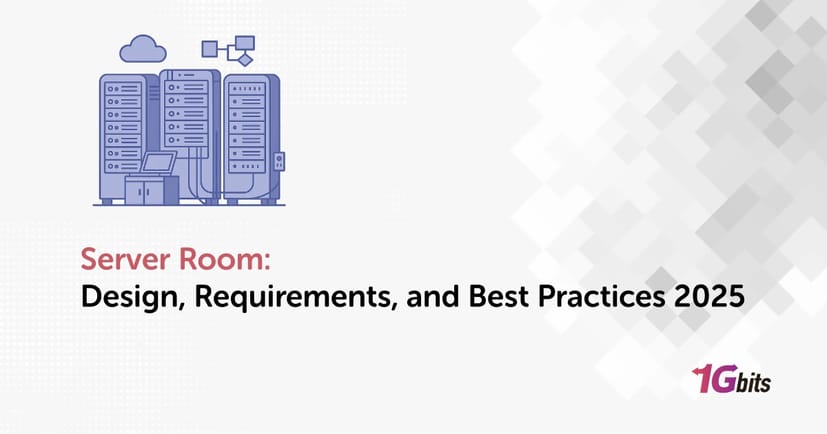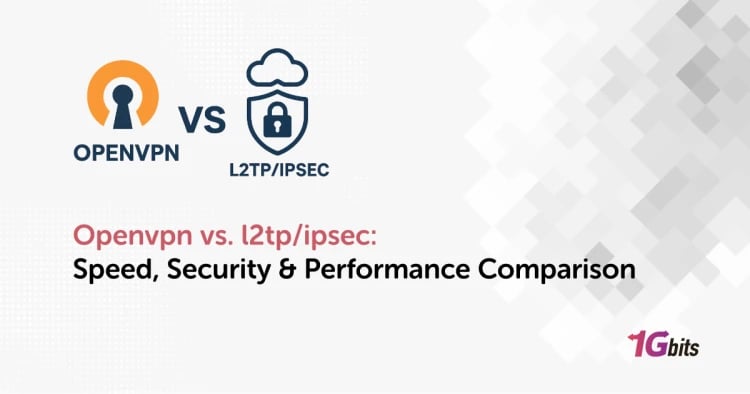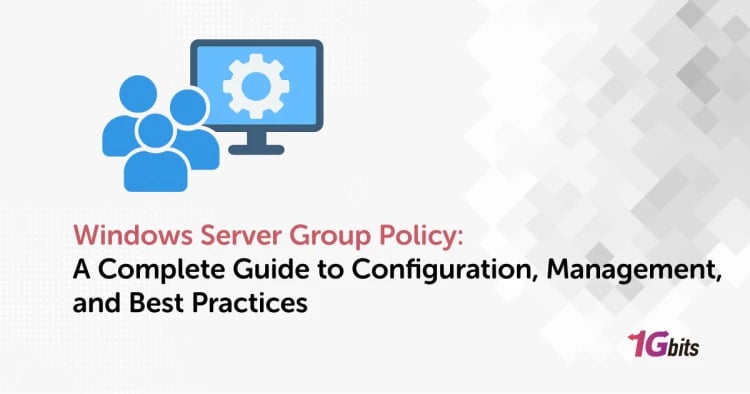A server room is the technological heart of modern businesses. It houses critical computing and networking equipment that stores, processes, and transmits digital data. Whether you’re running a small business or managing a large enterprise, understanding proper server room design and management practices ensures consistent uptime, data security, and operational efficiency.
A well-planned server room not only safeguards your IT infrastructure but also enhances the longevity and reliability of servers. From maintaining the correct server room temperature and humidity to implementing proper cabling, fire suppression, and energy efficiency systems, each element contributes to smooth operation.
This guide explores every aspect of server room requirements from design and environmental controls to safety and cost considerations. We’ll also compare server rooms with data centers and highlight how to optimize your setup in 2025.
|
Ideal Server Room Conditions |
Recommended Range |
Notes |
|
Temperature |
18°C – 27°C (64°F – 80°F) |
Optimal performance and reduced overheating |
|
Humidity Range |
40% – 60% relative humidity |
Prevents static and condensation |
|
Airflow & Ventilation |
Front-to-back air circulation |
Use raised floors and hot/cold aisle layouts |
|
Noise Level |
< 70 dB |
Implement soundproofing panels if necessary |
|
Lighting |
LED with minimal heat emission |
Enhances visibility and safety |
Importance of Server Rooms
In 2025, digital infrastructure has become the backbone of every organization. The server room is where essential business data, cloud applications, and internal networks are managed securely. Its role is far more than storage—it’s the control center that ensures your business remains connected, operational, and efficient 24/7.
Neglecting server room design can result in costly downtime, equipment failures, and even data loss. Therefore, proper planning, layout, and regular maintenance are crucial parts of modern server room requirements. Before reading about the details of server rooms, we recommend reading our article on What Is a Server.
What Is a Server Room?
A server room is a dedicated space designed to house computer servers, networking devices, and related hardware that manage data and applications. It provides a controlled environment with optimal server room temperature, power distribution, and cooling systems to ensure servers function efficiently and safely.
Difference Between a Server Room and a Data Center
While a server room is typically smaller and serves the needs of a single organization, a data center is a large-scale facility that hosts servers for multiple clients, often offering services such as colocation or cloud storage.
|
Feature |
Server Room |
Data Center |
|
Scale |
Small to medium (one company) |
Large, multi-tenant facility |
|
Ownership |
Owned and maintained by the business |
Managed by service providers |
|
Purpose |
Internal operations |
External hosting, cloud services |
|
Maintenance |
In-house IT team |
Professional facility management |
|
Cost |
Lower initial cost |
Higher operational cost |
A server room is ideal for businesses seeking control and security over their own IT systems without relying entirely on third-party services.
How Does a Server Room Work?
A server room functions as a centralized hub where data storage, networking, and power systems interact seamlessly. Each component contributes to the reliable performance of IT operations.
Components and Infrastructure
A typical server room design includes:
-
Server racks: To store and organize servers efficiently.
-
Cooling systems: Maintain ideal server room temperature and humidity levels.
-
Cabling and power management: Ensure safe energy distribution and data transmission.
-
Security systems: Protect sensitive data from unauthorized access.
-
Fire suppression: Prevent and contain fire risks effectively.
If you don’t know What is Server Rack, make sure to read our article about it.
What a Server Room Is Used For
Businesses use server rooms to:
-
Store and manage on-premises data.
-
Run internal and cloud applications.
-
Support email, websites, and communication systems.
-
Backup sensitive data and ensure redundancy.
-
Monitor IT infrastructure performance.
The server room requirements are tailored to each organization’s size and workload. Larger businesses may require redundant systems, while small businesses might use compact setups or small server room solutions
Server Room Design & Requirements
Designing an efficient server room involves planning for space, layout, airflow, cooling, and safety. The server room design must comply with industry standards while supporting your IT goals.
Server Room Size & Layout
The server room size depends on the number of servers, networking devices, and cooling systems you plan to install.
-
Small offices might dedicate 20–50 square feet for a small server room.
-
Mid-sized businesses may require 100–300 square feet.
-
Large enterprises could need over 500 square feet with multiple aisles and cooling zones.
Key layout considerations include:
-
Hot and cold aisle configuration: Separates warm and cool air for efficient cooling.
-
Raised floors: Facilitate cable management and airflow.
-
Accessibility: Sufficient space between racks for maintenance.
An optimized server room size ensures efficient use of resources while allowing future scalability.
Server Room Racks
Server room racks are the backbone of physical organization. They keep servers secure, stable, and accessible.
-
Types of racks: Open frame, enclosed cabinets, and wall-mounted racks.
-
Ventilation: Racks must promote front-to-back airflow to support server room temperature management.
-
Cable management trays: Prevent clutter and improve energy efficiency.
Choosing the right server room racks improves airflow, simplifies maintenance, and minimizes risks of overheating or accidental damage. You can read more about Types of Servers here.
Server Room Cabling & Power Management
Proper cabling is essential in any server room design. Cables should be organized, labeled, and kept off the floor to prevent accidents and interference.
Power management systems include:
-
Power Distribution Units (PDUs): Deliver electricity safely to each server.
-
Uninterruptible Power Supply (UPS): Provides backup power during outages.
-
Circuit breakers: Protect against overloads or electrical faults.
Well-planned power distribution reduces downtime, prevents energy loss, and ensures compliance with server room requirements.
Server Room Security Measures
Security is a core aspect of any server room design. Both physical and digital protections are necessary to safeguard critical assets.
-
Access control: Use biometric locks or key cards to restrict entry.
-
Surveillance: Install CCTV systems for 24/7 monitoring.
-
Alarm systems: Detect unauthorized entry or environmental changes.
Meeting server room requirements for security ensures compliance with data protection standards and minimizes the risk of breaches.
Server Room Temperature & Humidity Control
Maintaining the right server room temperature and humidity range is vital for performance and hardware longevity. Overheating can cause downtime, while too much humidity may lead to corrosion or static discharge.
Recommended Server Room Temperature
The ideal server room temperature typically falls between 18°C and 27°C (64°F to 80°F). This range ensures hardware stability and energy efficiency. Temperatures outside this range can degrade performance or shorten component lifespan.
Regular monitoring prevents thermal spikes and optimizes the cooling system’s performance.
Server Room Temperature Monitors
Server room temperature monitors are sensors that provide real-time readings and alerts. They help IT administrators take proactive measures before overheating occurs.
-
Smart sensors: Offer remote access via dashboards.
-
Integration with EMS (Environmental Monitoring Systems): Enables automatic alerts.
-
Redundant sensors: Ensure accurate readings across multiple zones.
Continuous monitoring helps maintain stable server room temperature and supports compliance with internal policies and safety regulations.
Server Room Humidity Range
The recommended server room humidity range is 40–60% relative humidity. Too low can cause static electricity buildup, while too high may result in condensation.
Humidity sensors should be installed at multiple points in the room, ideally near air intakes and exhausts. Maintaining the correct server room humidity range also helps reduce energy costs by optimizing the air conditioning system.
Air Conditioning & Cooling Systems
A reliable server room air conditioner ensures consistent airflow and cooling performance.
Common cooling methods include:
-
Precision Air Conditioning (PAC): Maintains temperature and humidity accurately.
-
In-row cooling: Places cooling units directly between racks for targeted cooling.
-
Hot/cold aisle containment: Separates air zones to improve efficiency.
-
Liquid cooling systems: Used in high-density environments.
Proper server room air conditioning not only prevents overheating but also improves equipment lifespan and energy efficiency.
Server Room Temperature and Humidity Monitor Devices
Combining both temperature and humidity sensors into a single device simplifies monitoring. Modern systems can send alerts via email or SMS when readings exceed safe limits.
These server room temperature and humidity monitor devices are essential for 24/7 supervision, particularly in businesses with critical uptime requirements.
Fire Suppression & Safety Systems
Protecting a server room from fire is a top priority, as a fire can lead to catastrophic data loss, equipment damage, and safety hazards. Modern server room fire suppression systems are designed to extinguish fires quickly without harming sensitive electronics.
Fire Suppression Technologies
Common server room fire suppression solutions include:
-
Gas-based systems (FM-200, NOVEC 1230): Displace oxygen to suppress fires safely without leaving residue.
-
Pre-action sprinkler systems: Activate only when both smoke and heat are detected to minimize water damage.
-
Early detection smoke alarms: Provide alerts before flames develop.
Combining multiple systems ensures redundancy and compliance with safety standards, fulfilling key server room requirements.
Backup Power & Redundancy
Continuous power is essential for any server room design. A UPS (Uninterruptible Power Supply) ensures servers continue operating during outages, while backup generators support longer disruptions. Redundant power distribution units (PDUs) prevent single points of failure, keeping your server room temperature and cooling systems functional even during emergencies.
Server Room Ambience & Environment
The server room ambience affects both the performance of equipment and the comfort of staff who interact with the space.
Noise Management
High-density server racks can produce substantial noise. To manage this:
-
Use soundproofing panels on walls and ceilings.
-
Isolate noisy equipment in separate enclosures.
-
Maintain server room temperature and airflow to reduce stress on fans.
Lighting Considerations
LED lighting is preferred for server room ambience, as it provides bright visibility without generating excess heat. Consider motion sensors or zoned lighting to save energy and reduce costs.
Accessibility
A well-designed server room should allow easy access for maintenance without compromising security. Raised flooring, wide aisles, and clear labeling of server room racks and cables ensure efficiency and safety.
Special Use Cases
Small Server Room Solutions
For businesses with limited space, a small server room can still meet operational needs. Compact layouts, high-density racks, and efficient cooling systems allow small organizations to enjoy the benefits of a dedicated server room without overextending resources.
Server Room at Home
With the rise of remote work and home-based IT projects, some enthusiasts and small businesses are setting up a server room at home. Key considerations include:
-
Maintaining proper server room temperature and humidity range.
-
Ensuring fire suppression and safe electrical setups.
-
Managing noise and accessibility in a residential environment.
A server room at home is feasible with the right server room design and adherence to safety standards.
Server Room Price & Cost Considerations
The server room price depends on several factors:
-
Server room size: Larger rooms require more racks, cooling, and space.
-
Equipment density: High-density racks and enterprise-grade servers increase costs.
-
Cooling & fire suppression systems: Advanced systems for monitoring server room temperature and humidity add to initial investment.
-
Maintenance & monitoring: Ongoing service contracts and EMS installation affect the total server room price.
Planning according to server room requirements ensures cost efficiency without compromising performance.
Pros and Cons of Server Rooms vs Data Centers
Advantages of Having Your Own Server Room
-
Full control over hardware, security, and configuration.
-
Lower latency for internal applications.
-
Custom server room design tailored to organizational needs.
-
Potential cost savings over long-term colocation for stable workloads.
Disadvantages Compared to Colocation/Data Centers
-
Higher initial server room price for setup and infrastructure.
-
Responsibility for maintenance, cooling, and power redundancy.
-
Scalability can be limited by server room size.
-
Requires dedicated IT staff for monitoring and troubleshooting.
Conclusion
A well-designed server room is essential for modern businesses, ensuring data integrity, operational efficiency, and security. By adhering to proper server room design, meeting server room requirements, and maintaining ideal server room temperature, businesses can prevent downtime, extend hardware life, and optimize IT performance.
For organizations looking for reliable, low-maintenance alternatives, 1Gbits offers VPS Hosting and Dedicated Servers with instant setup, 24/7 support, and global data centers. Whether you’re managing a small business or an enterprise-grade operation, 1Gbits provides the performance and flexibility to meet your IT needs without the complexities and costs of building your own server room.
Take control of your IT infrastructure today and buy dedicated servers from 1Gbits to experience reliable, secure, and scalable hosting solutions.










